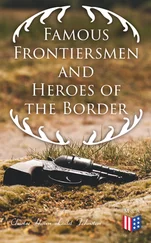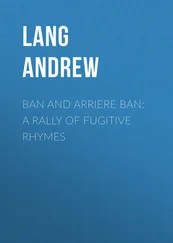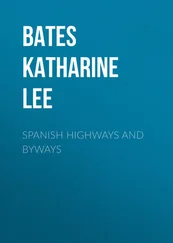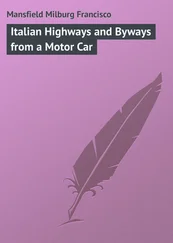Andrew Lang - Highways and Byways in the Border
Здесь есть возможность читать онлайн «Andrew Lang - Highways and Byways in the Border» — ознакомительный отрывок электронной книги совершенно бесплатно, а после прочтения отрывка купить полную версию. В некоторых случаях можно слушать аудио, скачать через торрент в формате fb2 и присутствует краткое содержание. Жанр: foreign_antique, foreign_prose, на английском языке. Описание произведения, (предисловие) а так же отзывы посетителей доступны на портале библиотеки ЛибКат.
- Название:Highways and Byways in the Border
- Автор:
- Жанр:
- Год:неизвестен
- ISBN:нет данных
- Рейтинг книги:4 / 5. Голосов: 1
-
Избранное:Добавить в избранное
- Отзывы:
-
Ваша оценка:
- 80
- 1
- 2
- 3
- 4
- 5
Highways and Byways in the Border: краткое содержание, описание и аннотация
Предлагаем к чтению аннотацию, описание, краткое содержание или предисловие (зависит от того, что написал сам автор книги «Highways and Byways in the Border»). Если вы не нашли необходимую информацию о книге — напишите в комментариях, мы постараемся отыскать её.
Highways and Byways in the Border — читать онлайн ознакомительный отрывок
Ниже представлен текст книги, разбитый по страницам. Система сохранения места последней прочитанной страницы, позволяет с удобством читать онлайн бесплатно книгу «Highways and Byways in the Border», без необходимости каждый раз заново искать на чём Вы остановились. Поставьте закладку, и сможете в любой момент перейти на страницу, на которой закончили чтение.
Интервал:
Закладка:
"Adjoining the church, and between it: and the Whitadder, remains of the Priory were visible a few years ago." Where are they now? Built into some wall or farm building, no doubt, or broken up, perhaps, to repair roads or field drains. And where is the font, with its leaden pipe, that stood "in the wall near the altar"? Perhaps – if it still exists, unbroken, – it may now be used as a trough for feeding pigs, as has been the fate of many another such vessel. It is hard to forgive the dull, brutish ignorance that wilfully wrecked so much of the beauty and interest that the past bequeathed to us.
It is not easy to say who was the saint from whom Abbey St. Bathans inherited its name. Probably it was Bothan, Prior of Old Mailros in the seventh century, a holy man of great fame in the Border. There is a well or spring not far distant from the church of St. Bathans, whose miraculous powers of healing all sickness or disease were doubtless derived from the good Father. These powers have now long decayed, but as late as 1833 – possibly even later – some curious beliefs regarding the well were held in the neighbourhood, and its waters, it was well known, would "neither fog nor freeze" in the coldest weather.
Shortly after leaving Abbey St. Bathans, as we gradually near the Lammermuirs, the land on both sides of Whitadder begins more to partake of the hill-farm variety, where grouse and blackgame swarm thick on the stooked corn in late autumn. From the south side, a little above Ellemford, there enters a considerable stream, the water of Dye, said to be of good repute as regards its trout. One of these high, round backed hills here is probably the scene of some great battle of old times. "Manslaughter Law" is the satisfying name of the hill. There is a tumulus still remaining on the north side of it, and near at hand weapons have been dug up, says the Statistical Account. One wonders what their fate may have been. They, at any rate, would surely be preserved? It is by no means so sure. One sword, at least, that was found many years ago on the west side of Manslaughter Law, met with the fate one might expect from the kind of people who used to quarry into beautiful old abbeys in order to get material to build a pig-stye. It was taken to the village smithy, and there "improved" out of existence – made into horseshoes perhaps, or a "grape for howkin' tatties." Had it been a helmet that was then unearthed, no doubt a use would have been found for it such as that which the Elizabethan poet sadly suggests for the helmet of the worn out old man-at-arms:
"His helmet now shall make a hive for bees."
Eastward from the spot where this sword was found is a barrow which, says the Statistical Account, "probably covers more arms"; and on a hill by Waich Water, a tributary of the Dye, are the Twin-Law Cairns, which are supposed to mark the resting place of twin brothers who fell here, – perhaps in pre-historic times. Tradition says that these two were commanders of rival armies, Scottish and Saxon, and that, neither at the time being aware of their relationship, they undertook to fight it out, as champions of the rival hosts. When both lay dead, some old man, who had known the brothers in their childhood, gazing on them, with grief discovered the relationship of the slain men; and to commemorate the tragedy, the soldiers of both hosts formed lines from Waich Water to the hill's summit, and passed up stones wherewith they built these cairns.
At Byrecleuch Ridge, towards the head of Dye Water, is another enormous and very remarkable cairn called the Mutiny Stones. This great mass of piled up stone measures two hundred and forty feet in length; where broadest, seventy-five feet; and its greatest height is eighteen feet. What does it commemorate? A great fight, say some, that took place in 1402 between the Earl of Dunbar and Hepburn of Hailes, in which the latter was killed. A prehistoric place of sepulture, hazards Sir Herbert Maxwell. But it was not here that Hepburn fell; that was elsewhere in the Merse. And they were little likely in the fifteenth century to have taken such titanic pains to hand his memory down to posterity. The prehistoric place of sepulture sounds the more probable theory. But why "Mutiny Stones"? There must surely be some local tradition more satisfying than that of the Hepburn-Dunbar fight.
The upper part of Whitadder must once have been well fitted to check hostile raids from the south whose object was to strike the fat Lothians through the passes over the Lammermuirs. In the few miles of wild hill country that sweep from its source on Clint's Dod down to its junction with Dye Water, there formerly stood no fewer than six castles, Chambers tells us, – John's Cleuch, Gamelshiel, (the lady of which was killed by a wolf as she walked near her home one evening in the gloaming) Penshiel, Redpath, Harehead, and Cranshaws. Except in the case of Cranshaws, there are now few traces left standing of these strongholds. Cranshaws, a building of the sixteenth century, is in good preservation; of Gamelshiel there remains a bit of wall, of Penshiel a fragment of vaulting; of the others no stone. Cranshaws of old, it is said, was long the haunt of one of those Brownies, or familiar spirits, that were wont in the good old days of our forefathers mysterious ly to do by night, when the household slept, all manner of domestic or farm work for those who humoured them and treated them well in the matter of food, or other indulgence affected by their kind. There was nothing a Brownie would not do for the family he favoured, provided that he was kept in good humour; otherwise, or if he were laughed at or his work lightly spoken of, it were better for that family that it had never been born; their sleep was disturbed o' nights, malevolent ill-luck dogged them by day, until he was propitiated. But leave out for him each night a jug of milk and a barley bannock, – they were not luxurious in their tastes, those Brownies, – and at dawn you would find
"… how the drudging goblin sweat
To earn his cream bowl duly set;
When in one night, ere glimpse of morn,
His shadow'y flail hath threshed the corn
That ten day-lab'rers could not end;
Then lies him down, the Lubber-fiend,
And stretched out all the chimney's length,
Basks at the tire his hairy strength;
And crop-full out of doors he flings
Ere the first cock his matin rings."
They tell that this particular Brownie at Cranshaws, being offended at some reflection made on his work, the following night took up an entire crop that he had thrashed, curried it to the Raven Craig, two miles down the river, and threw it over the cliff. Belief in the Brownie died hard in the Border I am not sure that in remote "up the water" districts he did not survive almost till the advent of motor cars and bicycles.
CHAPTER II BLACKADDER, NORHAM, FLORDEN, COLDSTREAM, WARR, AND THE EDEN
But a step over the moor from Waich Water, across by Twin-Law Cairns and down by the Harecleuch Hill we come to the head-waters of the most considerable of Whitadder's tributaries – Blackadder, "vulgarly so pronounced," says the old Statistical Account. Its real name is "Blackwater," according to that authority, because it rises out of peaty swamps that impart to its waters a look of sullen gloom. I am unable to say what now may be its reputation as a trout stream, but long years ago it abounded with "a particular species of trout, much larger than the common burn trout, and remarkably fat." The Statistical Account mentions a notable peculiarity of Blackadder, on the accuracy of which one would be inclined to throw doubt. It says that though every other stream in the country which eventually mingles its waters with Tweed, swarms with salmon in the season, yet into Blackwater they do not go; or if they enter at all, it is found that they die before they can ascend many miles. The swampy source of the stream "is commonly ascribed as the reason why the fish cannot frequent the river," says the Account. Drainage, one would be inclined to think, has long ago removed that fatal nature from the water, if it ever existed. Trout throve on it, at all events, red-fleshed beauties, "similar," says the clerical writer of the Statistical Account of the Parish of Fogo – a man and a fisher, surely – "to those of Eden Water, which joins Tweed three miles below Kelso. The Eden rises also in a marshy district, which may be the cause of this similarity of the fish." But most Border streams take their rise in more or less marshy districts, though they may not flow direct from a swamp.
Читать дальшеИнтервал:
Закладка:
Похожие книги на «Highways and Byways in the Border»
Представляем Вашему вниманию похожие книги на «Highways and Byways in the Border» списком для выбора. Мы отобрали схожую по названию и смыслу литературу в надежде предоставить читателям больше вариантов отыскать новые, интересные, ещё непрочитанные произведения.
Обсуждение, отзывы о книге «Highways and Byways in the Border» и просто собственные мнения читателей. Оставьте ваши комментарии, напишите, что Вы думаете о произведении, его смысле или главных героях. Укажите что конкретно понравилось, а что нет, и почему Вы так считаете.












